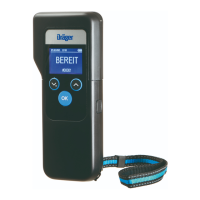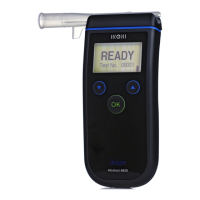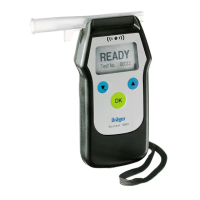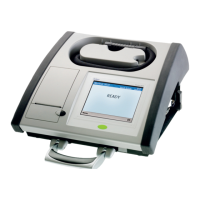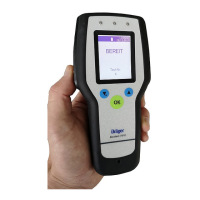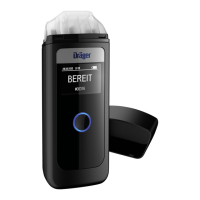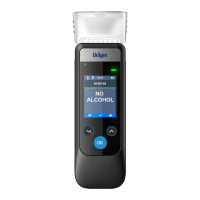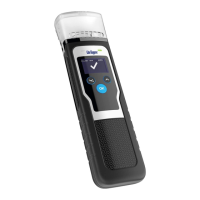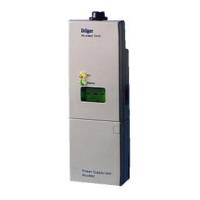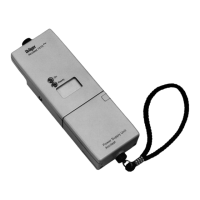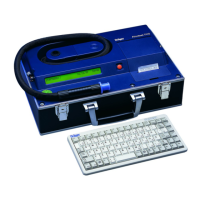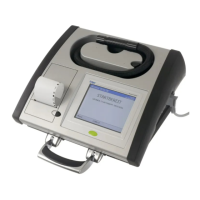Why Dräger Alcotest 6510 device cannot be switched on?
- KkristyfosterJul 30, 2025
If your Dräger Test Equipment won't switch on, the batteries are likely discharged. Replace them to resolve this issue.
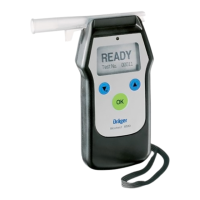
Why Dräger Alcotest 6510 device cannot be switched on?
If your Dräger Test Equipment won't switch on, the batteries are likely discharged. Replace them to resolve this issue.
Why does my Dräger Test Equipment switch off automatically?
Your Dräger Test Equipment might be switching off automatically because the batteries are discharged, in which case you should replace them. Alternatively, the device might have been left ready for measurement for more than 4 minutes. If this is the case, simply switch the device on again.
What to do if Dräger Alcotest 6510 shows insufficient volume, blow interruption?
If you're experiencing insufficient volume or blow interruption with your Dräger Test Equipment, it could be due to the subject not blowing hard or evenly enough. Ensure they are instructed to blow in the correct manner. Alternatively, the breath alcohol concentration might exceed the measuring limit, in which case you should contact MBRS.
How to fix Dräger Alcotest 6510 showing “Low Temperature Warm up Device Error ID 600”?
If your Dräger Test Equipment displays “Low Temperature Warm up Device Error ID 600”, it means the device is too cold. Warm up the device to resolve this issue.
What to do if Dräger Alcotest 6510 Test Equipment displays “High Temperature Cool down Device Error ID 600”?
If the display of your Dräger Test Equipment shows “High Temperature Cool down Device Error ID 600”, it indicates that the device is too warm. Cool down the device.
Why does Dräger Alcotest 6510 leave menu mode automatically?
The Dräger Test Equipment automatically switches to measuring mode after 120 seconds. If you need to stay in the menu, re-select the menu option.
What does "Internal System Error" mean on Dräger Alcotest 6510 Test Equipment?
If your Dräger Test Equipment displays "Internal System Error", it indicates a device error, and no measuring function is possible. Contact MBRS.
| Type | Breath Alcohol Tester |
|---|---|
| Resolution | 0.01 mg/L |
| Sensor Type | Electrochemical Sensor |
| Operating Temperature | -5 °C to +50 °C |
| Storage Temperature | -20 °C to +60 °C |
| Humidity Range | 10% to 95% RH (non-condensing) |
| Display | LCD |
| Power Supply | Rechargeable battery or AC adapter |
| Interface | USB |
| Calibration | Automatic |
| Calibration Interval | 6 months |
Emphasizes understanding and strict observation of instructions for safe operation.
Maintenance must only be performed by experts using authentic spare parts.
Liability transfers if serviced by unauthorized personnel or used improperly.
Device for measuring alcohol concentration in breath for professional/official use.
Warning: Charging batteries while in the instrument will cause damage.
Warnings about service socket and not inserting power cables.
Waiting periods, avoiding mouth alcohol, proper breathing, and minimum air volume.
Steps before automatic measurement: insert mouthpiece, switch on device.
Describes the 'WAIT' and 'READY' displays during the measurement process.
Instructions for the test subject to blow evenly and continuously.
Indicates the device is analyzing the sample.
Explains when and how the measurement result is displayed, including units.
Describes error for low breath volume and how to repeat.
Describes error for improper exhalation and how to repeat.
Steps for performing calibration using setpoint, gas type, and supply gas.
How to perform an accuracy check after calibration using calibration gas.
Displays internal error messages and advises contacting DrägerService if the error persists.
Warnings about battery disposal, fire, recharging, and explosion risks.
Steps for calibrating with the Mark II simulator, including connection advice.
Instructions for calibrating using dry gas and a hose.
Describes the calibration procedure and subsequent accuracy check.
Possible cause (battery) and remedy (replace batteries).
Possible cause (battery) and remedy (replace batteries).
Possible cause (weak blow) and remedy (ask to blow harder).
Error message and remedy (recalibrate by expert).
Error message and remedy (repeat accuracy check, call service).
Error message and remedy (remove/reinsert batteries, contact service).
Cause: batteries discharged. Remedy: replace batteries.
Cause: batteries discharged. Remedy: replace batteries.
Cause: testperson not blowing hard/evenly. Remedy: ask to blow harder/more evenly.
Cause: Calibration not successful. Remedy: Calibrate again by trained service personnel.
Cause: Accuracy check not successful. Remedy: Repeat accuracy check, call DrägerService.
Cause: Instrument error. Remedy: Remove/insert batteries, call DrägerService.
